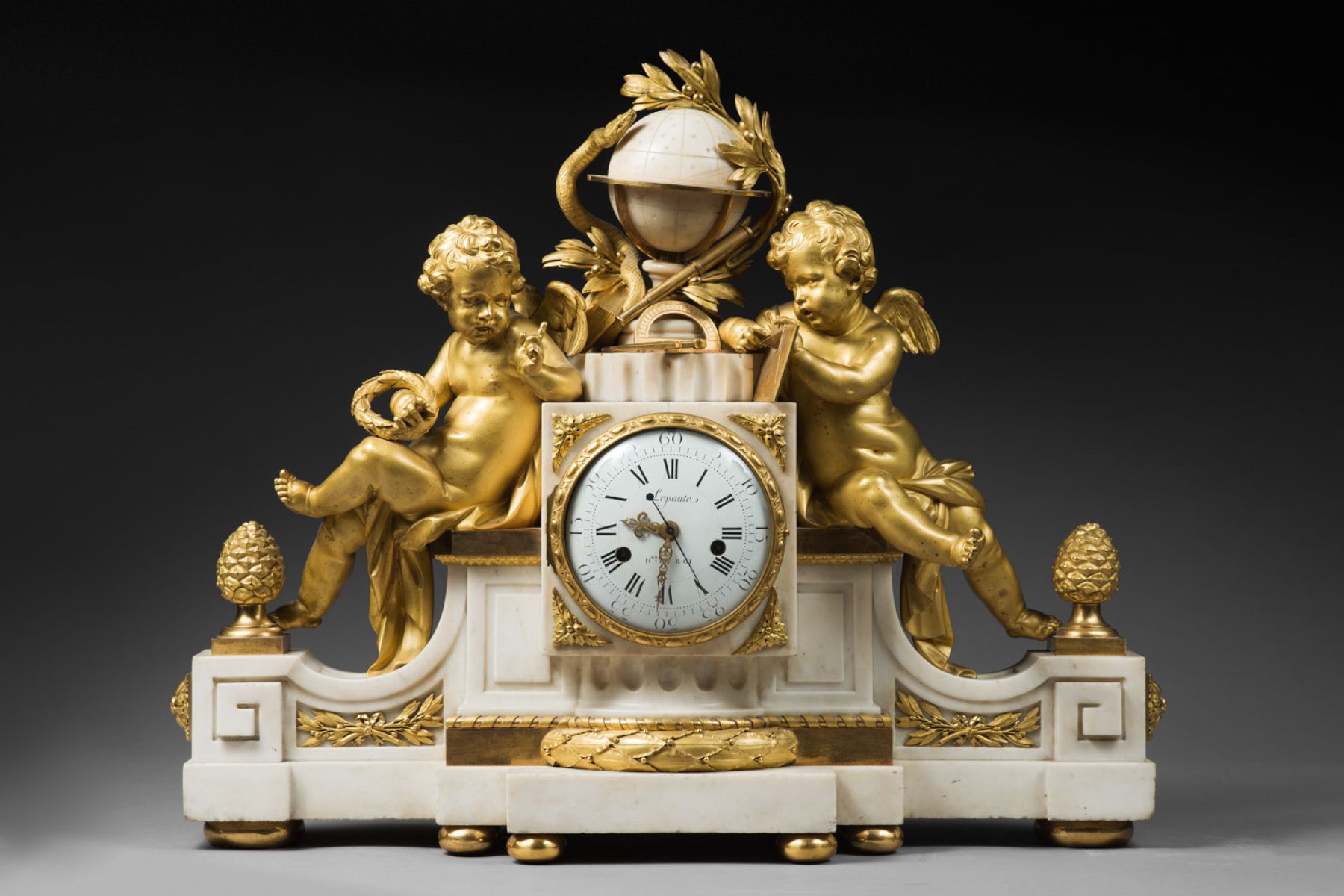Galerie WANECQ
12, rue des Saints-Pères
75007 Paris
FRANCE
Tél. +33 (0)1 42 60 83 64
Monday to Saturday
10h - 13h & 14h - 18h30
- FR
- EN

Works of Art
18th century
Lepaute Jean-André (1720 - 1788)
1
Works of Art du 18th century
"Eloquence and Astronomy" Transition period clock
DIMENSIONS : l. 22.44 .inH. 18.9 .inP. 6.69 .in
PRICE : Contact us
REQUEST INFORMATION
?In white marble and gilded bronze adorned with two putti, one representing eloquence, index finger raised, holding a laurel wreath in his right hand, behind him a book and a snake symbolising knowledge, and the other, astronomy, holding a sundial, a compass and a protractor placed at the foot of a celestial sphere surmounting a fluted column containing the dial.
The architectural base is decorated with laurel leaves and pine cones at either end.
The iconography and measurements of our clock correspond to the model described by Lepaute himself in No. 7 of his "Description de plusieurs ouvrages d'horlogerie" (1766): "Pendule imitant un couronnement d'édifice. 21 inches wide, 16 inches high. In the centre, a column containing the movement and ending in a globe. Two genii seated on an acroterion enclose the movement. 1500 livres".
As this model is absent from the 1764 version of this document, our clock seems to have been produced at this precise period. This clock is an admirable example of French clockmaking. Watchmaking that Jean-André Lepaute himself describes as "hitherto commendable for the perfection of its movements, and which today strives to combine beauty of form and design".
Our model can also be compared with a drawing of a clock by the bronzemaker Robert OSMOND (1711-1789) from "Recueil de desseins. Modèle de pendules, années 1755-1780".
King's clockmaker. He worked with his brother Jean-Baptiste Lepaute (1727-1802) from 1747.
In 1749, he married Nicole-Reine Etable de la Brière, a mathematician and astronomer, who was a great help in his research. In particular, he created works for the Garde Meuble de la Couronne, the Ecole Militaire, châteaux of Choisy, Bellevue and La Muette, and the Palais du Luxembourg.
Jean-Baptiste took over the running of the workshop when his brother retired. One of his most remarkable works, "The Dance of Time", created in collaboration with the sculptor Claude Michel Clodion in 1788, can now be admired at the Frick Collection in London.